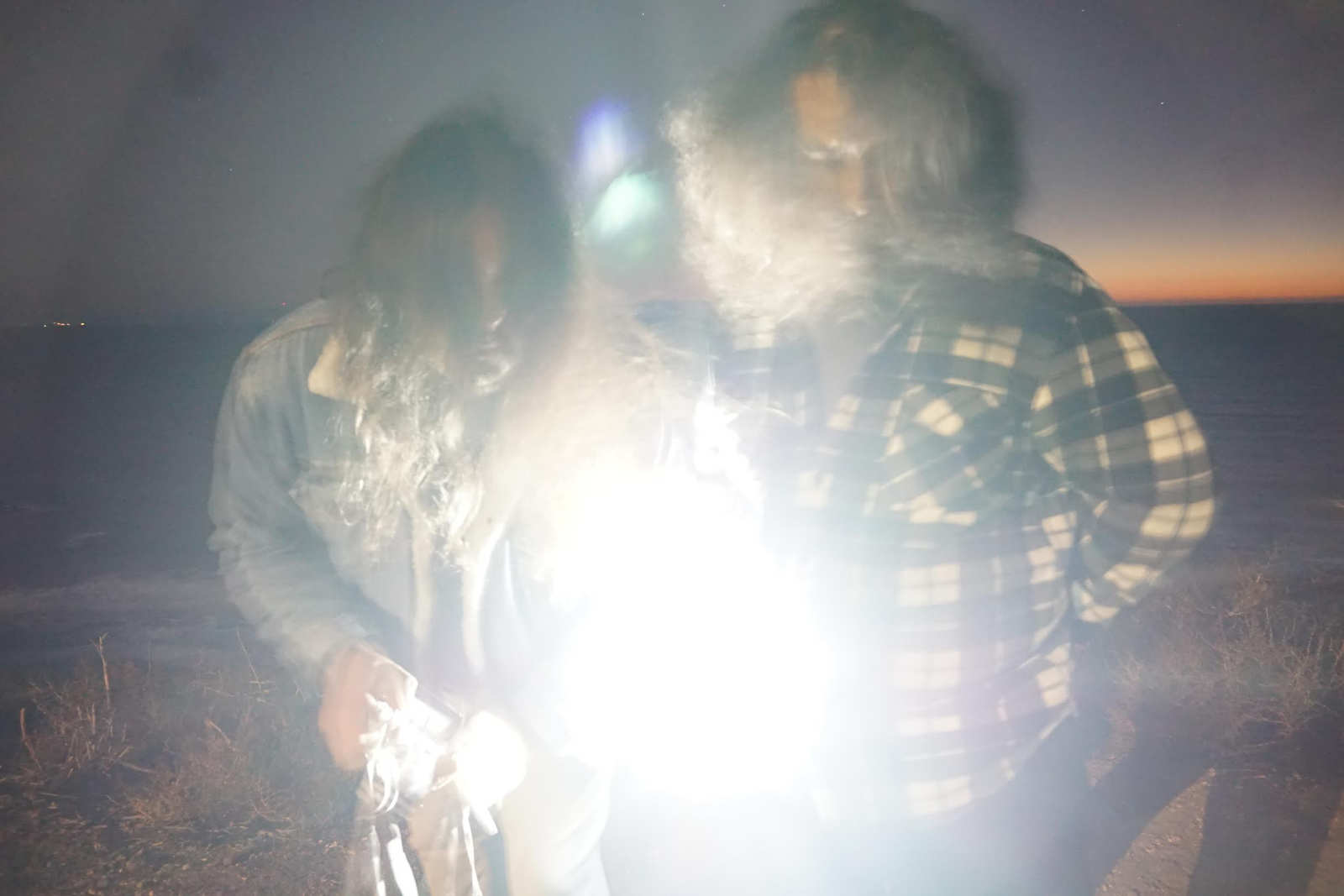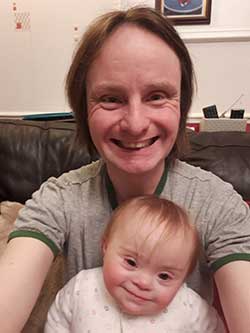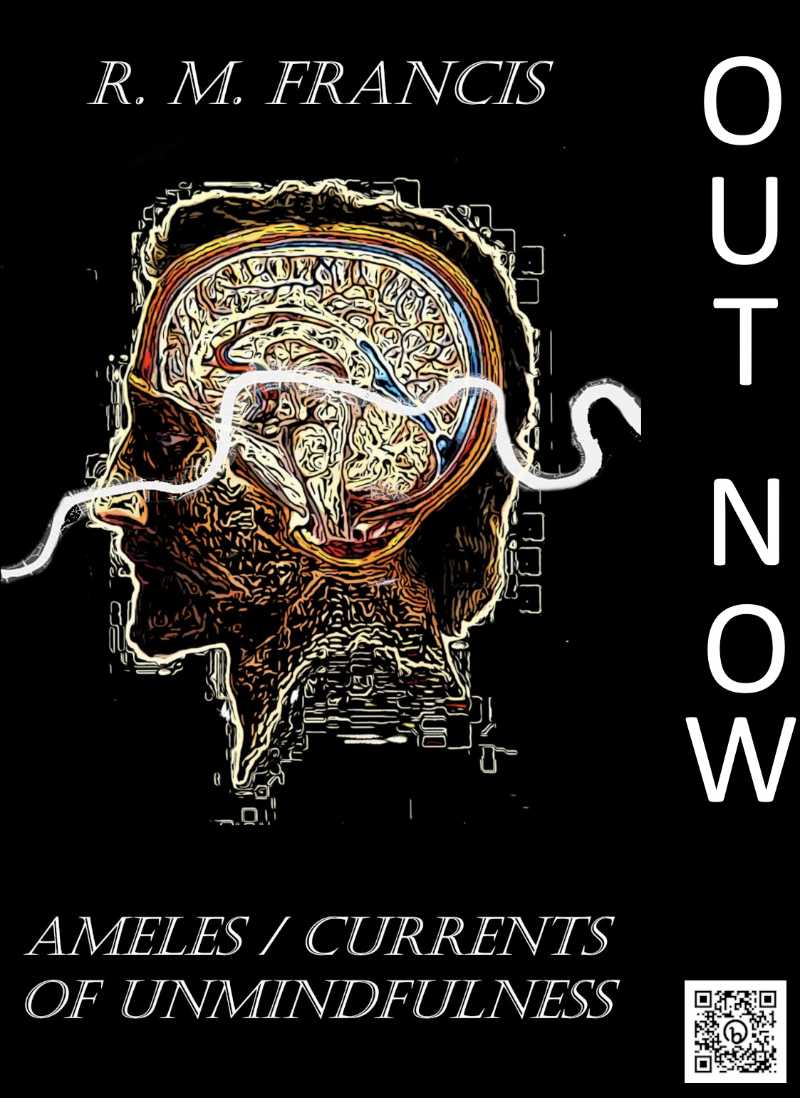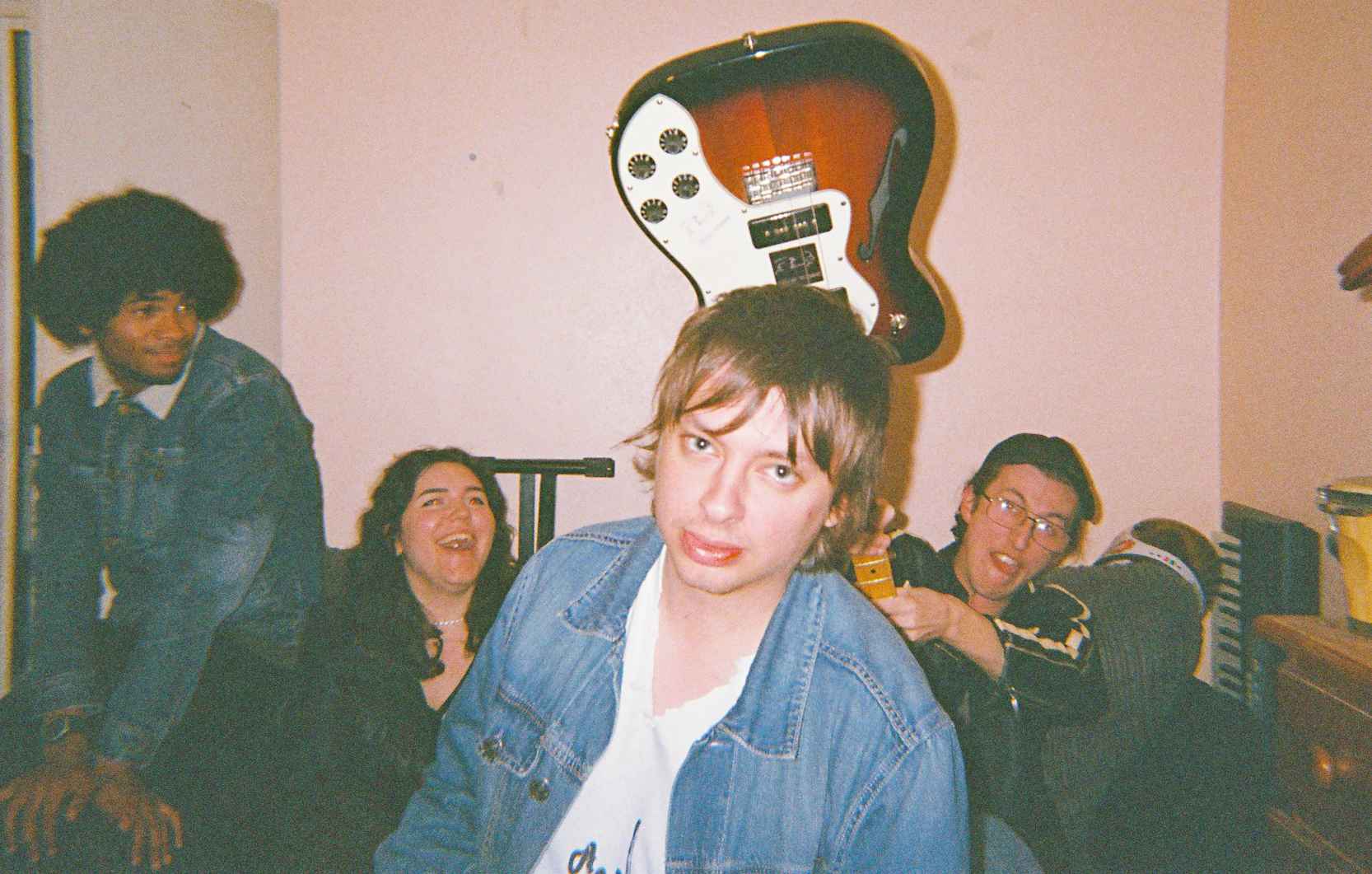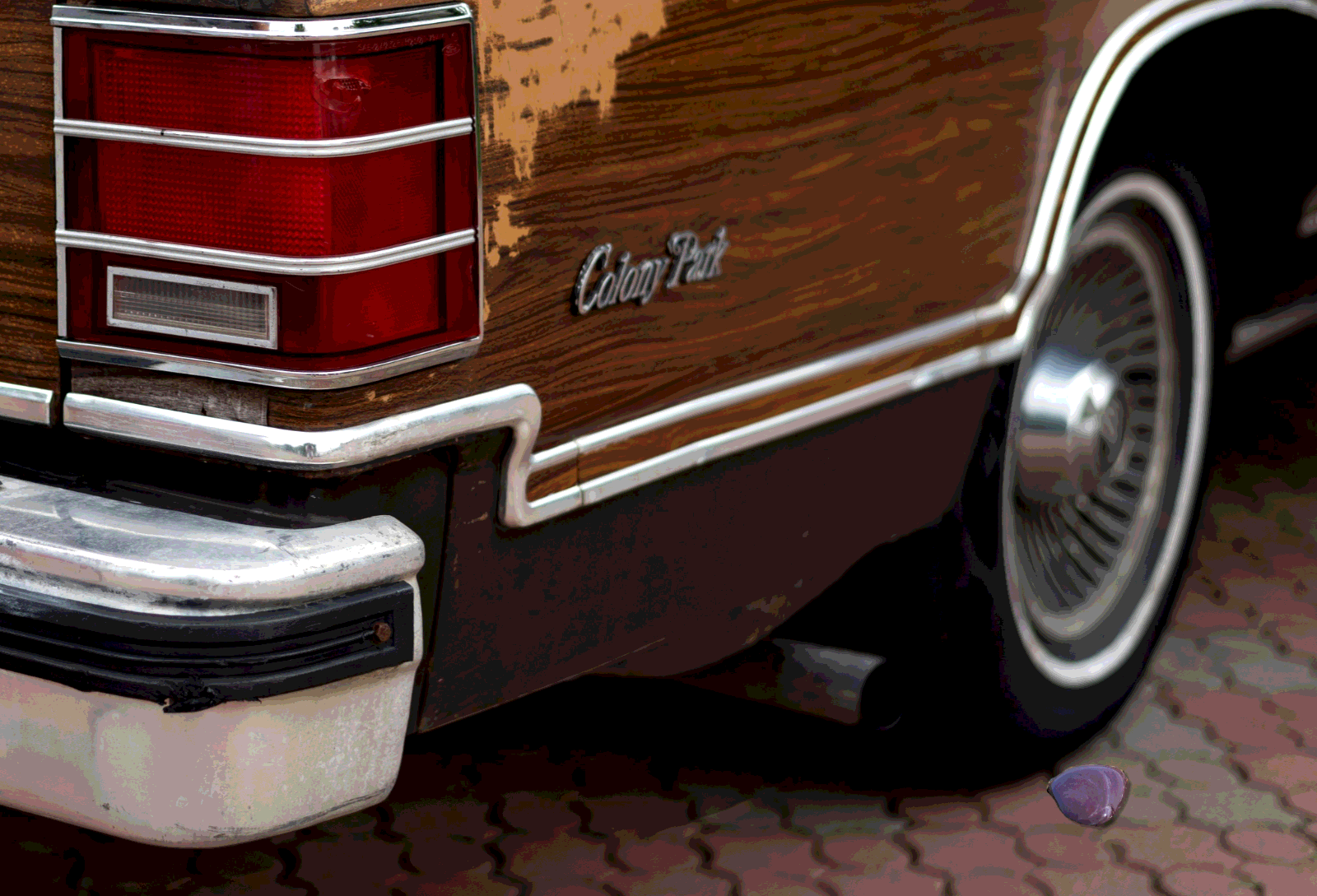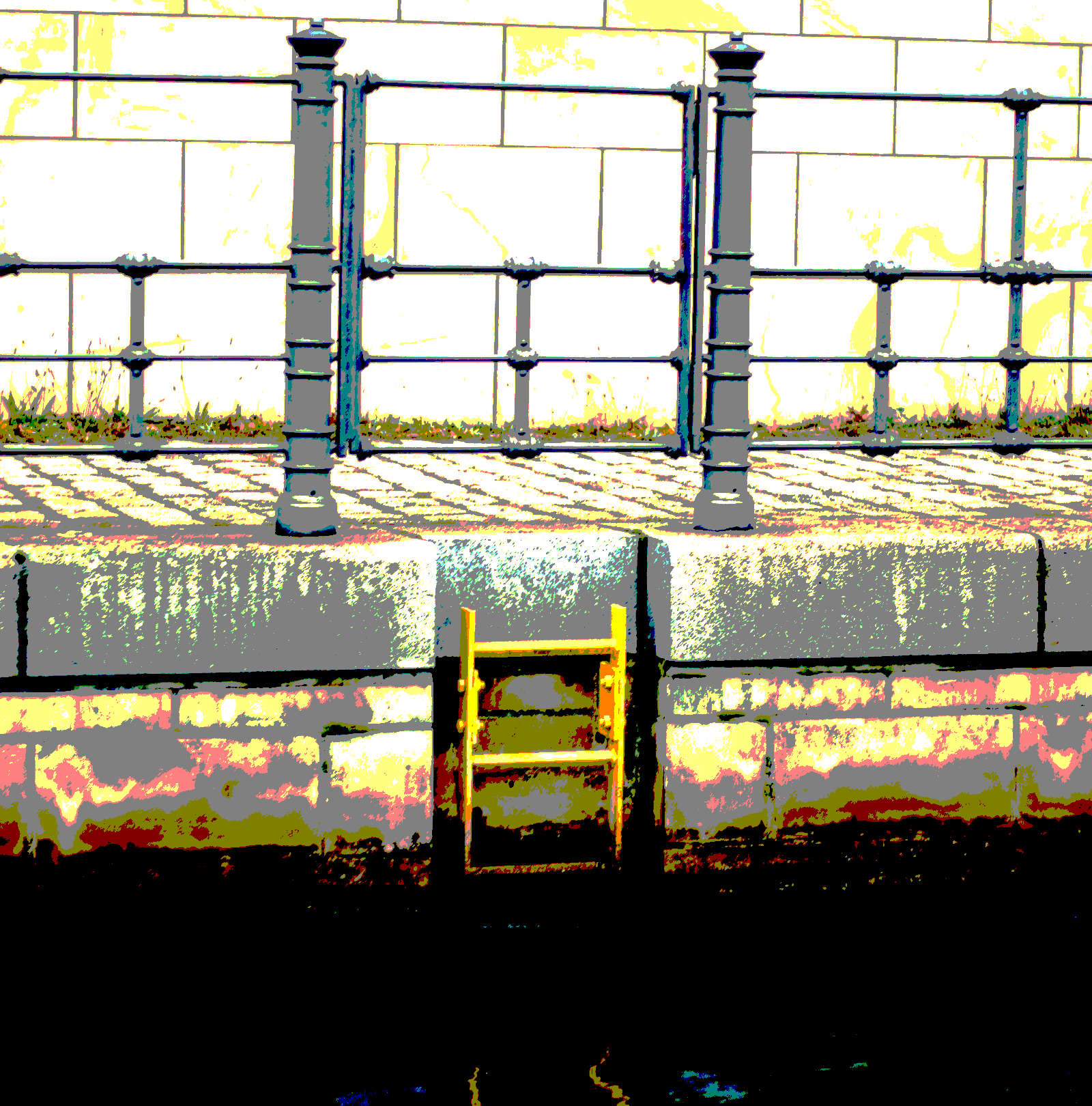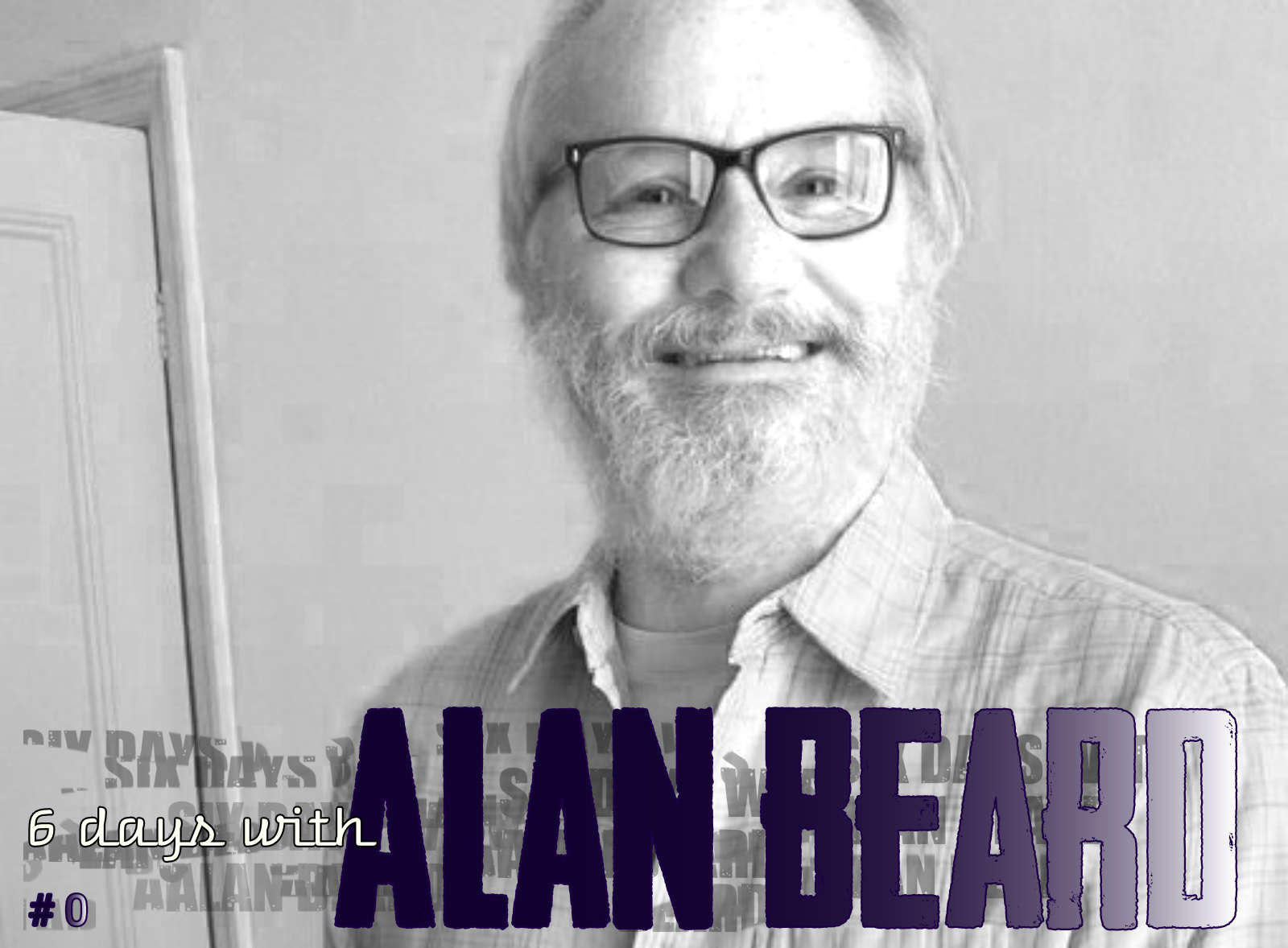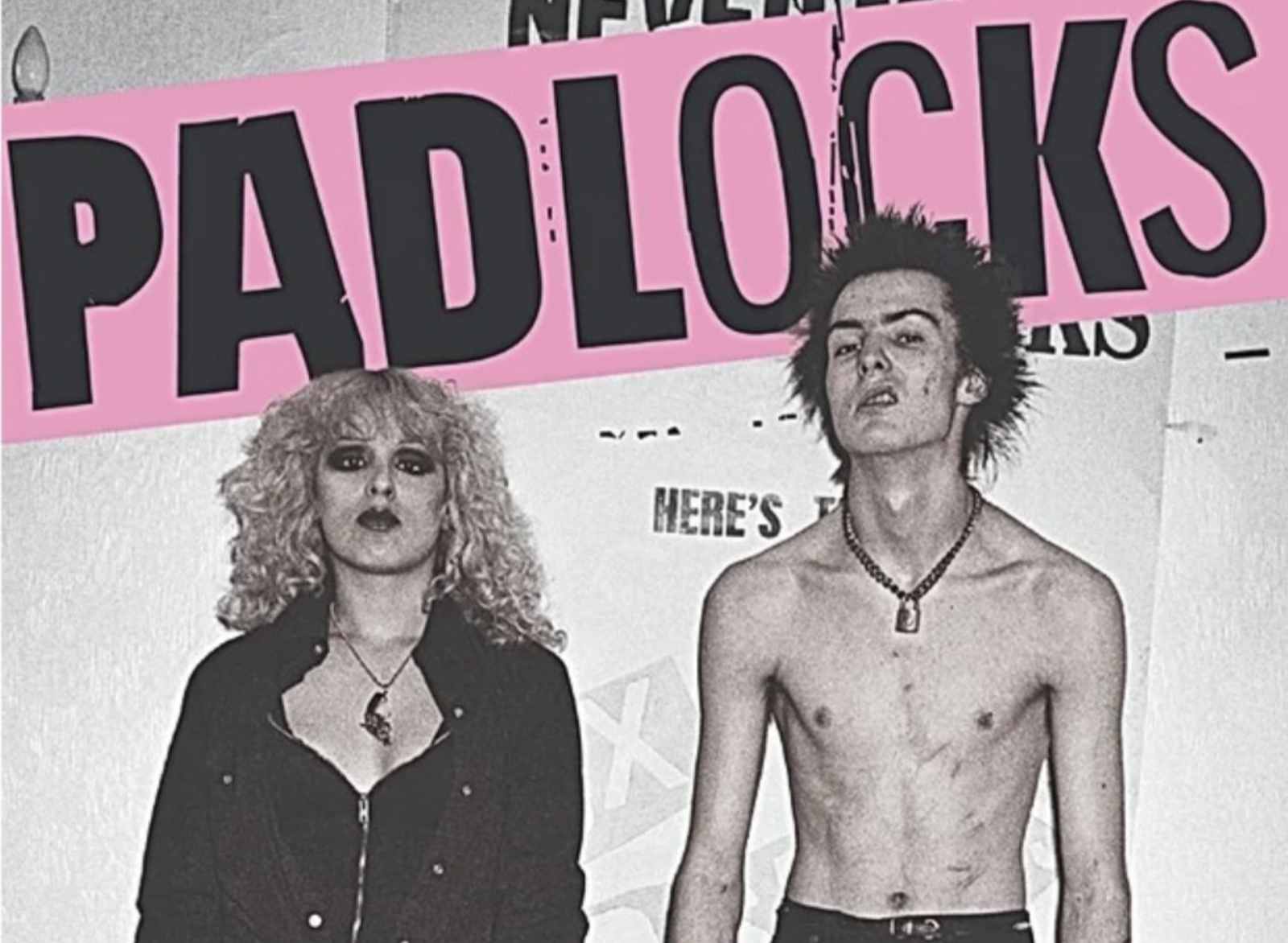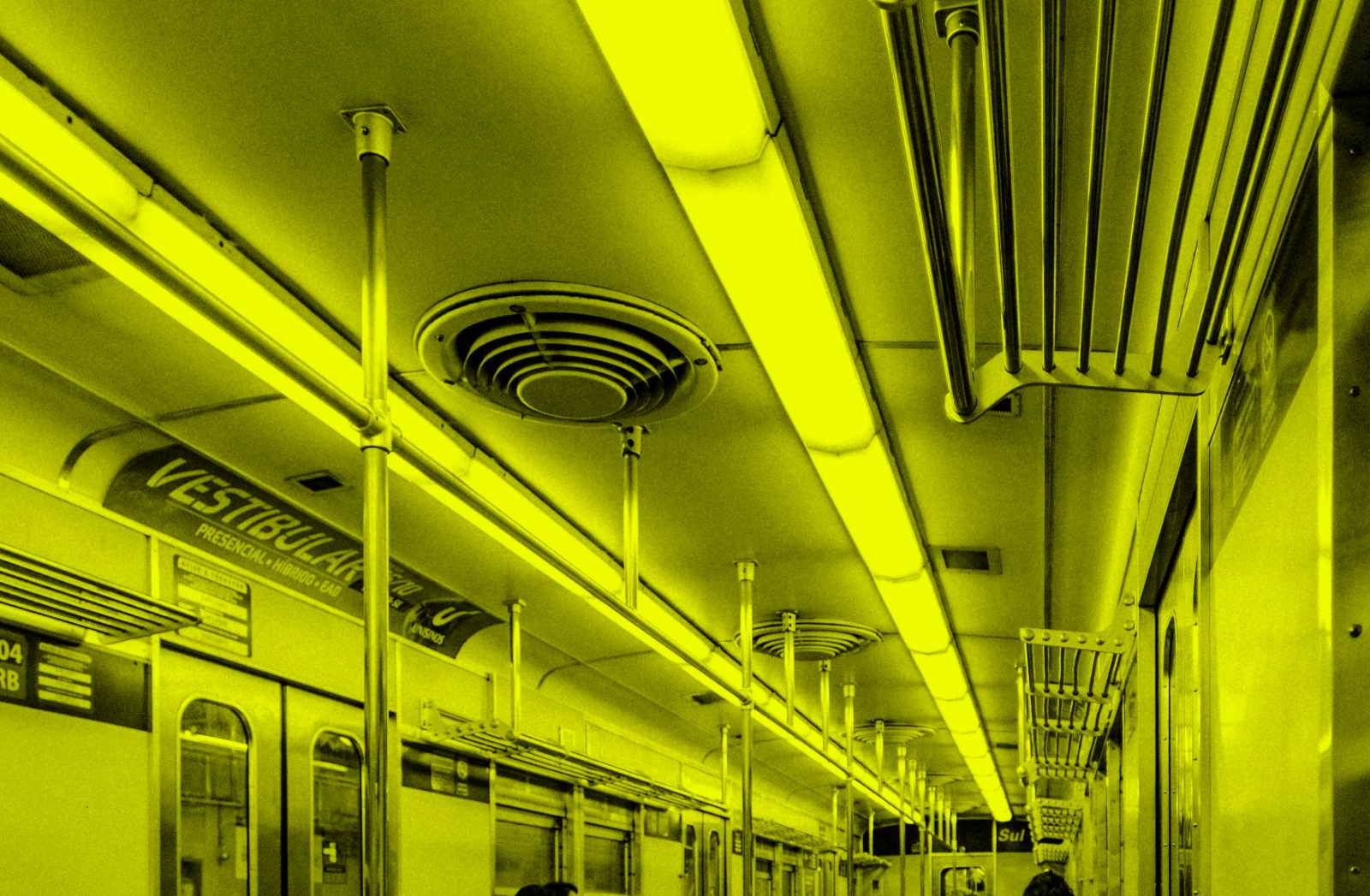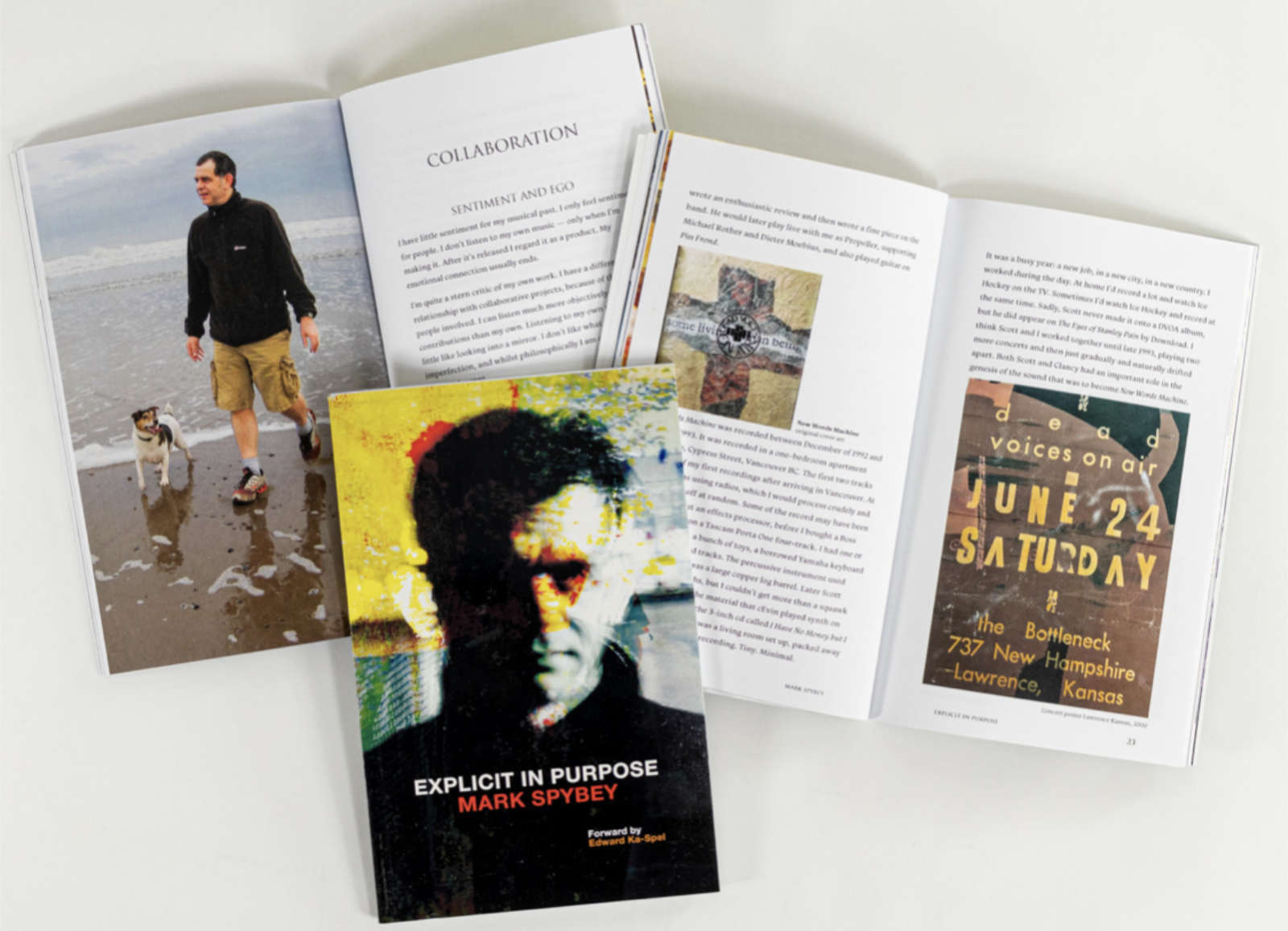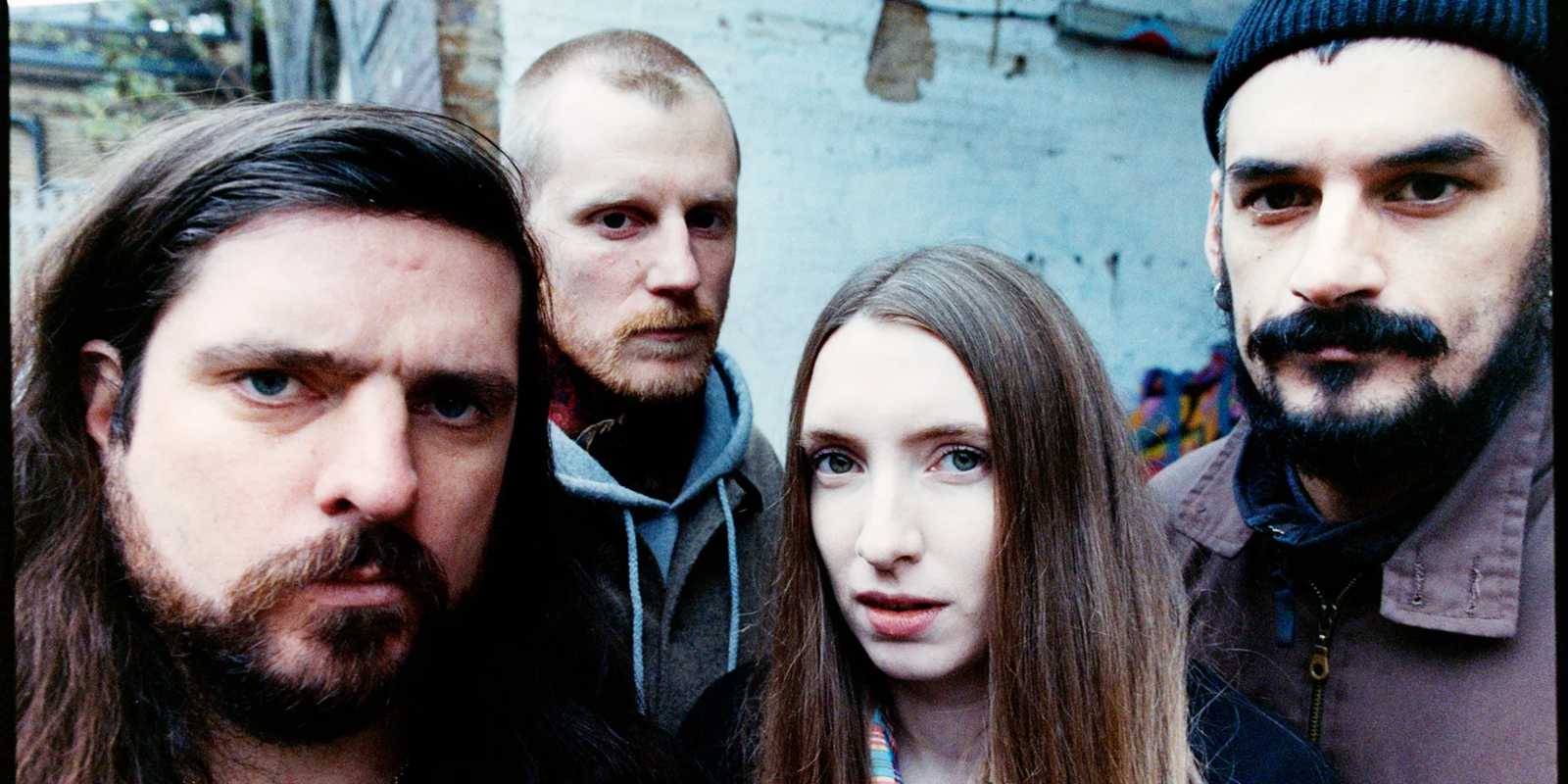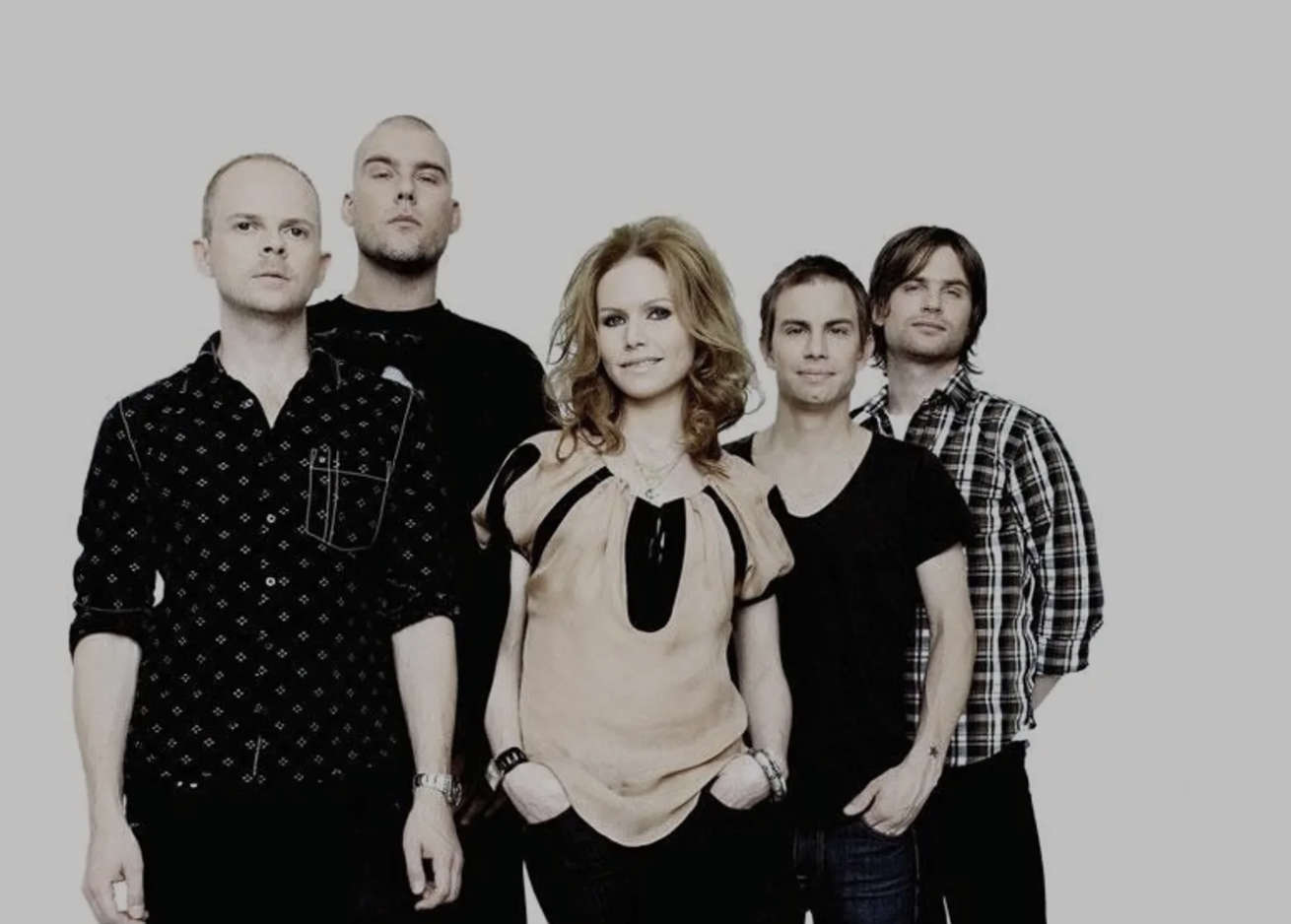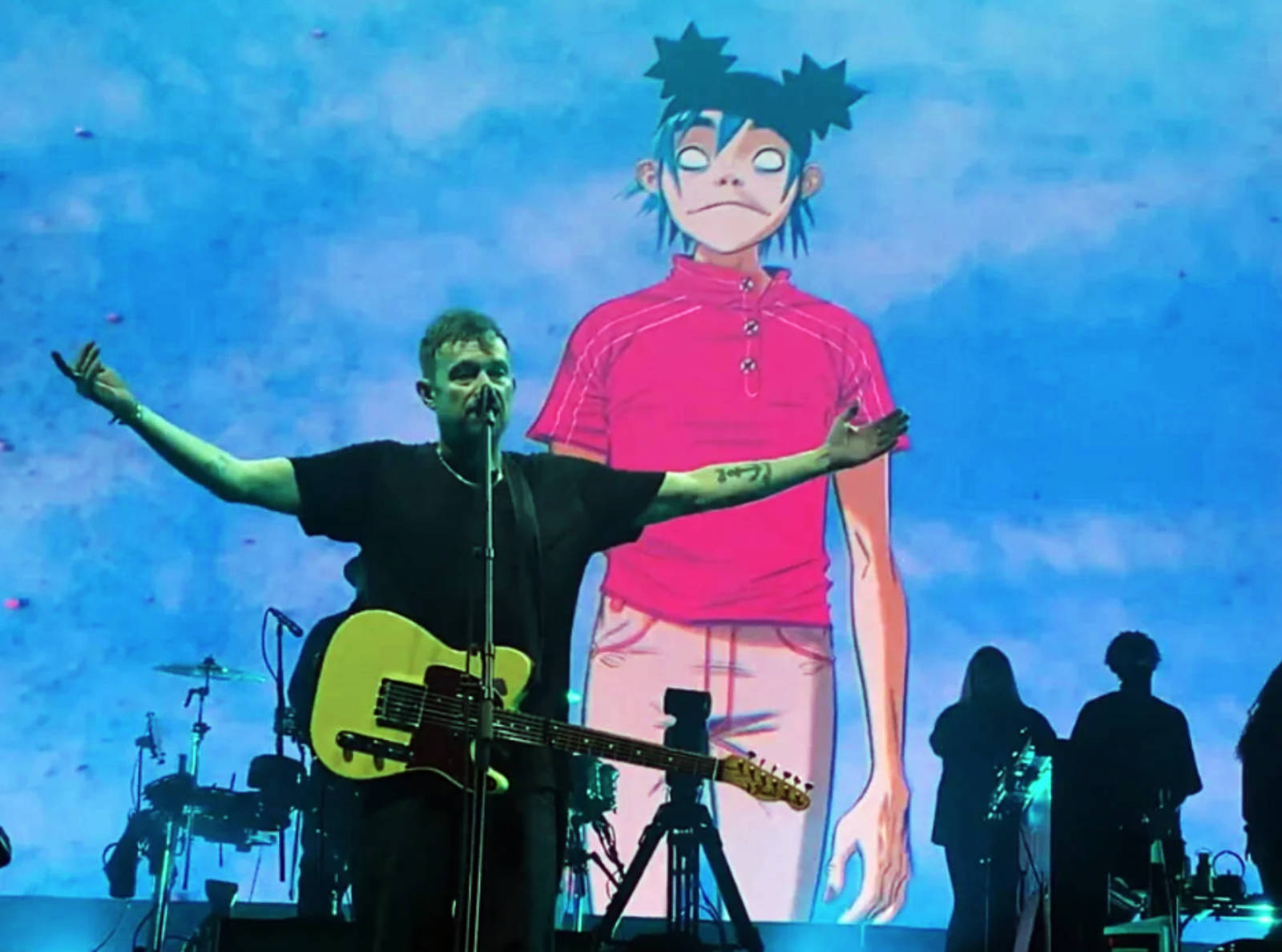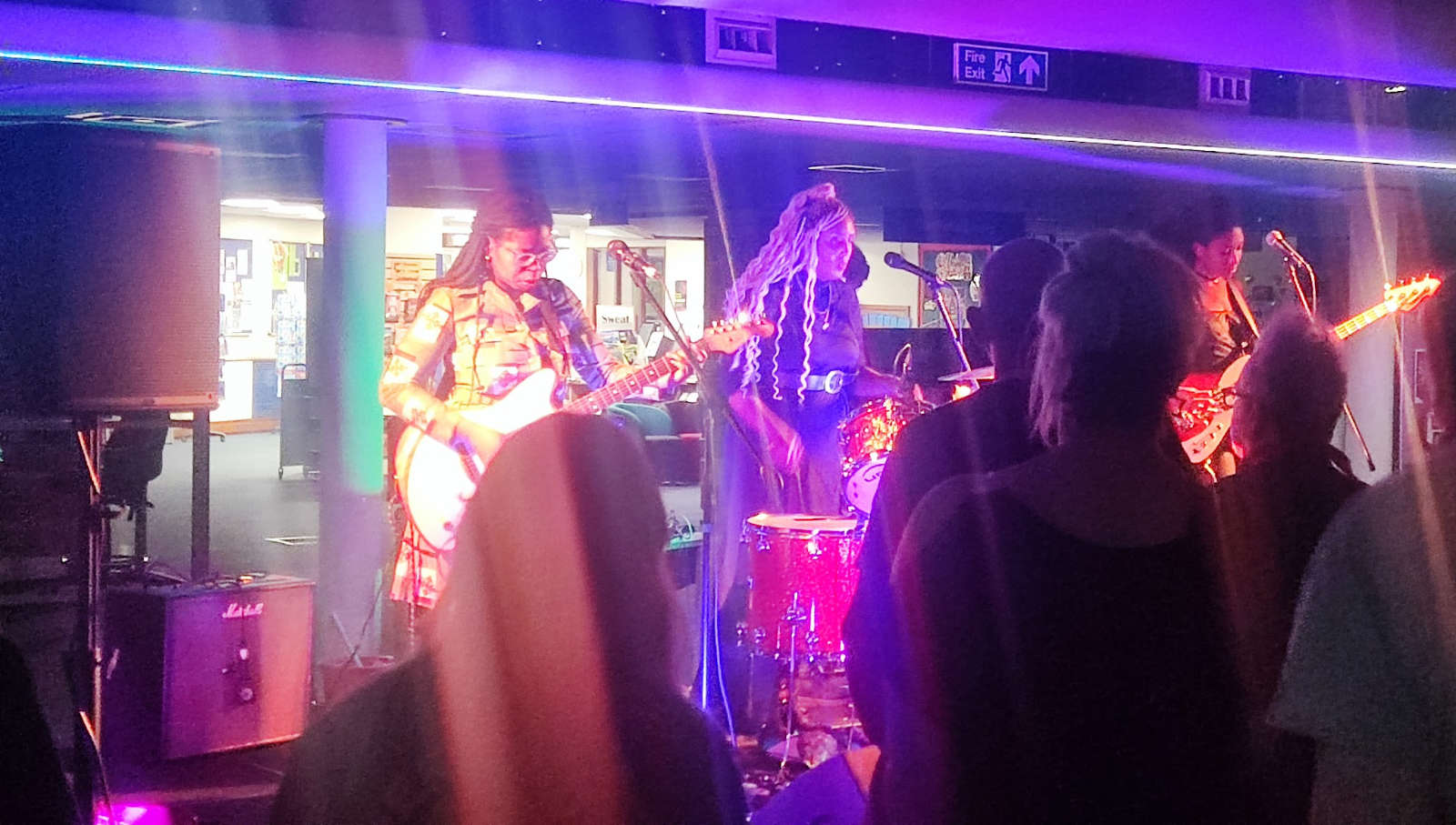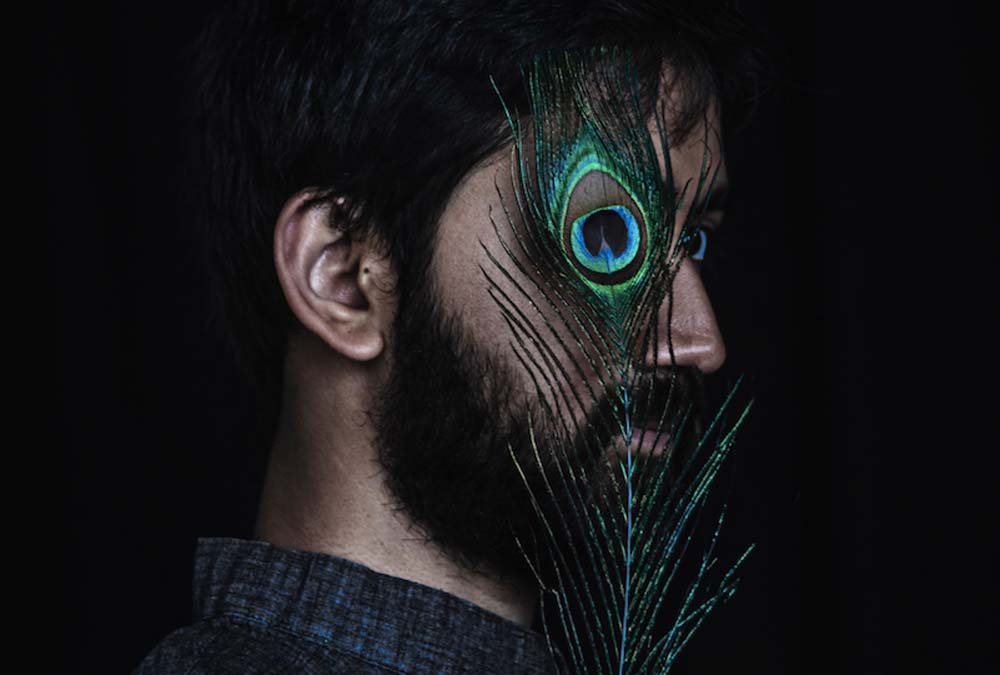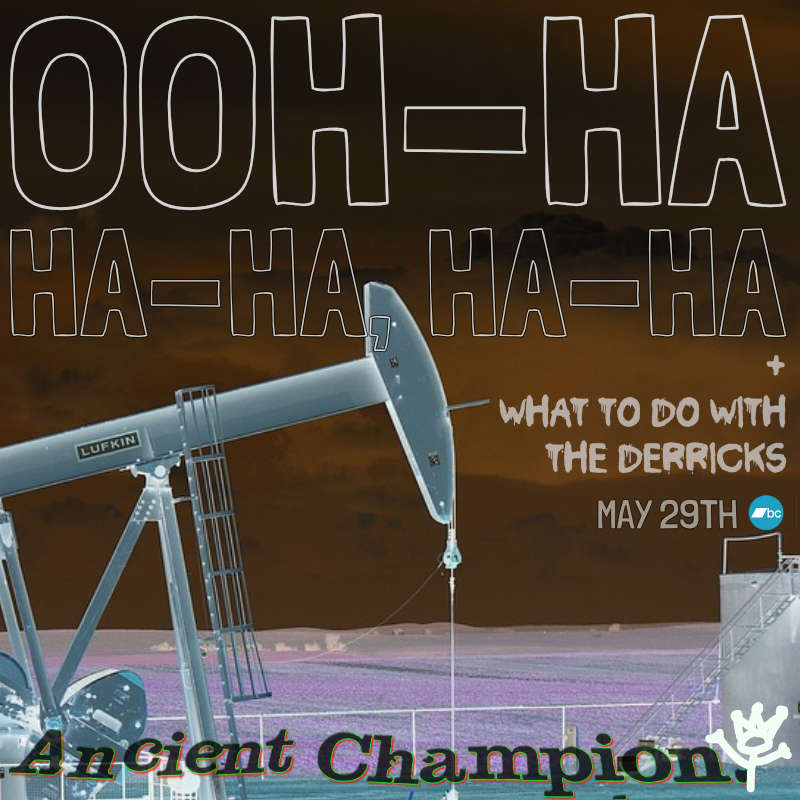Corduroy Institute are from San Diego. Their new LP, many years and many iterations in the making, Take The Train To Manchester is available now. John Robinson reviewed it for Outsideleft, here→. We're happy though to have the band's own track by track, right here. Take it away...
1.
Take the Train to Manchester Instrumental
Working Title: "Triparallel Jam" Corduroy 60
The oldest piece on the album. Initially recorded at the Bancroft Laboratory of Auditory Sciences on December 15, 2019, shortly after midnight. We had just returned from an art crawl in Barrio Logan, which in turn had been preceded by a recording session for the song that would become "With an English Raincoat" on our album Eight/Chance/Meetings.
This music was generated as W. Ruiz played single notes on his Arturia Minibrute monophonic synthesizer and S.A. Morin processed these notes through a set of effects pedals. The centerpiece was the Electro-Harmonix Triparallel Mixer, a unit which allows a single signal to be processed on three independent effects units. On this sonic excursion, the units in question were the EHX Superego Plus, the DOD Rubberneck analog delay, and the EHX Attack Decay. Almost as an afterthought, we decided to hit the record button on our Tascam Portastudio 2488neo to capture this bout of unconstrained experimentation.
2019 receded, 2020 began. Our musical activity then ground to a halt for months. Eventually, S.A. Morin returned to the Tascam multitracks to work on some of our incomplete pieces. On May 7 of that year, the "Triparallel Jam" became Corduroy 60 after he added percussion from the Volca Drum. To do so, he had to identify the improvisation's implied tempo of 70.5 beats per minute. He then made a rough mix by adding and removing the drums in a live mixdown on the Tascam.
The song remained dormant until 2022 when S.A. Morin overdubbed two different basslines on two different days in July. The first was done alone on July 24 and the second was recorded on July 31 when both members of Corduroy Institute were present. On March 19, 2023, we returned to the multitracks and manually fused these two basslines in another live mixdown on the Tascam. This completed the song.
When attempting to finalize the direction of the album on the first day of August of 2023, we realized that "Take the Train to Manchester" would be an apt name for this dynamic seven-minute instrumental. Once this was established, it became clear that it should also
serve as the record's title. This decision then allowed the album to consolidate itself around a loose concept of discontinuity and endless returning.

2.
[A] Girl Named Philosophy Vocal
Working Title: Corduroy 62
Recording the instrumental portion of this song took place during the Lost October Sessions in 2020. These were our first recording sessions we had after our ability to convene had been precluded by the events of that year. During the sessions, we temporarily decided to forego the random number generator concept which was propelling our Eight/Chance/Meetings album. Since we opted to engage with the music without any preconditions, the three songs we created during these sessions were relegated to obscurity for years.
For these sessions at the O'Higgins Laboratory of Recorded Sound, S.A. Morin brought his Bass VI along with a compact pedalboard involving a Korg Nu:Tek Overdrive, an EHX Superego Plus, a NUX Atlantic Reverb & Delay, and a small VOX amPlug 2 AP2CL Clean Headphone Amp-a rare departure from his usual pedalboard. No guitars were used during the sessions..
Corduroy 62 was the second song we made during the Lost October Sessions. It was recorded on the afternoon of October 17, 2020. This song relied on the Roland MC-707 groovebox. W. Ruiz first sampled S.A. Morin playing the Bass VI. This sound was manipulated via modest time stretching and placed atop a sparse drum rhythm. Then, the duo improvised by having S.A. Morin play a Bass VI bassline and W. Ruiz doing live manipulation of the aforementioned sample (often via reversals or fades) along with sparse drums (both on the MC-707 and the adjacent Korg Electribe ES-1). Following this improvisation, additional melodic riffs on the Bass VI were sampled onto the MC-707. An overdub ensued as S.A. Morin triggered these samples on the MC-707 and W. Ruiz added live sound manipulation via its effects section. This song is notable in our discography for not having any synthesizer sounds.
The track was thought to be fated to be an instrumental, but circumstances changed. On March 21, 2022, we were granted access to a private art space in La Jolla, California. In addition to creating new music, we decided to record vocals for extant songs to capitalize on our time at this location. Thus, S.A. Morin assembled song lyrics from the cut-up stanzas in W. Ruiz's repertoire. He then sang these lyrics atop the Corduroy 62 instrumental.
On July 4, 2023, we decided to augment these vocals with additional effects. We felt the song already connoted experimental dub music, so adding live reverb and delay was deemed appropriate. We ran his 2022 vocals through a NUX Atlantic Reverb & Delay pedal. First we added a mix of reverb and delay, and the second time we did more extensive live dub manipulation. Video footage of this was recorded and excerpts were posted on YouTube.
Whilst mastering the album on August 13, 2023, we felt that the dub effects were a bit too abrasive at times and even contained a noticeable degree of clipping. We had to alter the mix in order to diminish the harshness while maintaining the desired effect. Finally, we boosted the MC-707 samples a bit to gain a bit more midrange in the overall mix.
3.
Say Something Gentle Vocal
Working Title: Corduroy 68
On November 6, 2021, Corduroy Institute convened at the Bancroft Laboratory of Auditory Sciences to record the first song since the release of our previous album, Eight/Chance/Meetings.
For rhythmic content, S.A. Morin used the Bass VI and its standard pedalboard setup consisting of the Boss LMB-3 bass limiter-enhancer, Boss CE-2w chorus, Boss DM-2w analog delay, and EHX Deluxe Bass Big Muff. W. Ruiz used the Roland MC-707 for drums. Our notes indicate that his percussion came from a sound set he created in 2020 along with some drum tones he made within the unit using the XMOD feature (tones whose frequency is modulated by other tones). This rhythmic improvisation was captured on video on multiple smartphones, making it one of the first sessions in which we recorded both of ourselves at work.
The melodic content entailed two different takes, both using the same equipment. S.A. Morin, whose large guitar pedalboard was located elsewhere, opted to plug his Telecaster into the Bass VI's pedalboard to take advantage of the Boss DM-2w and Boss CE-2W. W. Ruiz used an Akai s5000 sampler with the Arturia Microfreak as his controller. For the first take, the s5000 employed a patch called "Velocity Orchestra," while the second take involved one called "Oceanic Wavetable." Both patches were largely composed of layered samples from the Microfreak, making this an instance in which a machine that was sampled now controlled multiple iterations of itself.
The song remained untouched until March 21, 2022, when we were granted access to a private art space in La Jolla, California. In addition to recording new music, we decided to record vocals for incomplete instrumentals in order to capitalize on our time in this inspirational setting. Consequently, S.A. Morin assembled song lyrics from cut-up stanzas in W. Ruiz's repertoire. The thematic contrast between the last stanza and the rest of the song was intentional. S.A. Morin sang these lyrics atop the Corduroy 68 instrumental, with several sections featuring him double-tracking himself. Unreleased video footage of his vocal takes
exists in our archives.
The song was mixed by S.A. Morin on July 3, 2023.
4.
Uncirculated Knowledge of the Universe Instrumental
Working Title: Corduroy 72
In the middle of 2022, the Bancroft Laboratory of Auditory Sciences was reassembled in order to facilitate sonic research within a self-enclosed space. On July 31, shortly after S.A. Morin recorded his second bassline for the song that would become "Take the Train to Manchester," we made our first new song within this reconfigured space.
The song began with a rhythmic improvisation with S.A. Morin on the Bass VI and W. Ruiz on the Roland MC-707 This groovebox was now at eye level rather than on a lap or tabletop, allowing for a new physical interaction with the device. We then added melodic content to the piece. Rather than using a guitar, S.A. Morin again used the Bass VI but added some distortion via the Deluxe Bass Big Muff Pi. W. Ruiz used the Roland V-Synth using a patch which relied on erratic sine waves augmented by a pitch-shifted delay. He also employed the synthesizer's D-Beam as part of the performance. Footage was captured on a camcorder and excerpts were posted on Instagram.
Unlike the rest of the tracks on Take the Train to Manchester, we managed to record all the vocals for this song on the same day we created the instrumental. This dynamism and coherence had not characterized our workflow since 2019, and we relished in our ability to seize upon the creative impulse that evening. Lyrics were created using cut-up stanzas crafted in July of 2022 and from assemblages made in July and August of 2021. Both members of Corduroy Institute sang on this song. Footage from this portion of the session is preserved in our archives. Late in the evening, a scratch mix was made and portions of this process can be viewed on Instagram.
The song remained dormant until May 14, 2023. On that day, we made some minor modifications to the piece. W. Ruiz took his last vocal burst and sampled it onto the Ensoniq EPS 16+. He then manipulated this sample's loop point to make it glitch, and this was reintroduced into multitracks. Similarly, S.A. Morin's concluding vocal phrase was manipulated. These edits, however, were done entirely within the computer. Then, we added external reverb to our vocals. We ran all of our vocals through the TC Electronic T2 reverb pedal, thereby finalizing the mix of this song.
5.
(An) Intimate (Tension) Vocal
Working Title: "Pizzacato Duet" Corduroy 74
This song was the last to be recorded for the album, but its genesis stems back to 2021.
Ruiz had downloaded a virtual modular synthesizer called VCV Rack 2 in early December of that year. He experimented with the concept of using samples of Corduroy Institute as avenues for new directions in sound. We had already sampled ourselves on earlier occasions, such as on "In this Confessional" from Eight/Chance/Meetings wherein we sent "Mantra: Retreat/Repeat” into our Eurorack modular system and turned it into an ambient texture.
Now, while exploring VCV Rack 2 at the O'Higgins Laboratory of Recorded Sound by himself, W. Ruiz opted to use a more recent recording. He went back to the multitracks for Corduroy 68 from November 6. He loaded his Akai s5000 improvisation on the "Oceanic Wavetable" patch into the VoxGlitch Grain Engine module and created a complex generative sound that resembled bowed & plucked orchestral instruments. He called it "Pizzacato [sic] Duet."
On the evening of December 23, 2023, he decided to record the sound of this somewhat unpredictable orchestra onto the 1010music Bluebox. He barely manipulated any parameters, altering only the position of the waveform scanner which determined which audio moments from the WAV file would be sampled. Upon revisiting the Bluebox, he realized he hadn't recorded the music, so he tried it again using the same process.
After opening the contents of the MicroSD card, he realized he had actually recorded both the first and second takes. He aligned the recordings and collated them into a stereo track, effectively creating a chamber ensemble of string instruments. Unfortunately, two days later, W. Ruiz was afflicted by the disease of the era and the track was left to linger in the digital cloud for years.
On May 13, 2023, we revisited this piece at the Bancroft Laboratory of Auditory Sciences. We connected a smartphone to our Tascam and recorded the stereo "Pizzacato Duet" from 2021 onto the multitrack. Once the WAV file had streamed, the digital cloud then went straight into the next file in our folder: A grainy percussive tone made on the Pigtronix Infinity Looper from November 27, 2019. We opted to keep it as a serendipitous memento of life's absurdity.
This piece's timbre was in keeping with the Modern Classical concept which S.A. Morin had first articulated in 2022 (see "No One Ever Knows"), so we opted to not incorporate drums. Instead, S.A. Morin added a free-flowing Bass VI part while W. Ruiz played two of his samplers—the first time he simultaneously played two large keyboards for melodic content on a song. One was the Roland V-Synth which used a patch called "Ostpolitik." The other was the Ensoniq EPS 16+ which used a patch called "Cantsu En TJ," which itself was a sample of an Akai s5000 patch of the same name, itself consisting of several samples of our own Waldorf
Blofeld synthesizer patches. Our musical improvisation atop the "Pizzacato Duet" was recorded in one take, and video footage from this day was posted on Instagram.
On May 14, 2023, we returned to this piece to give the previous day's Bass VI performance a deeper sense of ambiance. We sent the audio into the DOD Rubberneck delay pedal, and in the process we discovered a certain setting which allowed the pedal to replicate the preceding note yet transposing it up by an octave. S.A. Morin then used the pedal as an instrument onto itself, one which allowed him to build upon his own bassline by providing his own dub-like accompaniment. Video footage was posted on Instagram.
Initially, this experimental piece was considered to be an ideal candidate for a future instrumental project. However, as we started to consolidate a tracklist on July 4, 2023, we realized the piece could work within the overall mood which was forming as the album tracks were assembled. It was becoming clear that our 2023 album would contain an admixture of instrumental and vocal tracks. Thus, on that day, we set about crafting the song's final mix before making it a part of the tracklist.
Corduroy 74 received its title on August 1, 2023. As with all the instrumentals on this album-barring the title track-we used cut-ups to give us the titles. The words "An"/"Intimate"/"TENSION" emerged from the B. Davis Archive. The parentheses and capitalization corrections were added shortly thereafter.
6.
They Don't Even Know Instrumental
Working Title: Corduroy 61
This recording marked our first in-person collaboration since a vocal session in February of 2020 and signaled the beginning of what would become the Lost October Sessions. It took place on Thursday, October 15, 2020, at 11:40 PM. When S.A. Morin arrived at the O' Higgins Laboratory of Recorded Sound, W. Ruiz had already set up a complex array of drum machines. He had an Elektron Digitakt, a Roland MC-707, and a Korg Volca Beats all connected via MIDI. The Digitakt provided the master clock output at 105 beats per minute. Everything was plugged into the Tascam DP-24SD Digital Portastudio. S.A. Morin played a bassline on the Bass VI as all three drum machines played distinct parts in tandem.
Then, for melodic content, S.A. Morin relied on the EHX Superego Plus pedal to guide his Bass VI into tremolo-laden tones reminiscent of synthesizers. W. Ruiz used the Roland MC-707 as a synthesizer by using a sound he crafted by mixing built-in ROM files alongside his own samples. This haunting patch was also played via the MC-707's pads rather than with a keyboard controller. It is worth noting that Corduroy 61 marked the first time we used the MC-707 on a recording and this machine appears on six of nine songs on this album.
After completing this cathartic piece, our first in-person instrumental recording since January 4 of that year, we knew we hadn't lost the ability to craft music together. Whatever ineffable essence characterizes Corduroy Institute was still evident even after all the life-changing events which upended much of what we knew. Music remained capable of eliciting pathos.
That said, the song never seemed destined to be on this album. The presence of three drum machines made it quite oppressive to listen to, and it also seemed like the lead synthesizer pad made it unlikely that it could even feature a set of vocals. It was relegated to the background for years as other songs took precedence. We did not even consider it as a contender for the album until July 4, 2023. As we selected songs and took stock of what we had on hand, we realized that Corduroy 61 made more sense than then still-unfinished Corduroy 69. We then returned to the multitracks and made edits on the drum parts to make the song more dynamic. We also added reverb to the Digitakt drums to make them less clicky. "It's latinesque, but in a big digital cave,” as the day's notes say. The title, chosen on August 1, came from cut-ups and directly relates to the song that follows.
When preparing the album's release, we wondered what genre this could qualify as. We concluded that perhaps it exists somewhere in the realm of "Ethereal wave" or "Neoclassical darkwave." Positing genre descriptors to works created via improvisation is curious, as outcomes are always unintended and the end result is ultimately an unknowable destination.
7.
No One Ever Knows Instrumental
Working Title: Corduroy 70
Early 2022 was notable for its absence of vision and direction, leading to a dearth of progress for Corduroy Institute. Eventually, however, S.A. Morin had a vision of a new sort of musical approach. During a meeting on March 17, he posited the notion of exploring "Modern Classical" in the context of the electric guitar. This is not new in itself, as this language has been explored by composers wielding orchestras of amplified guitars ever since the latter part of the 1970s. S.A. Morin's conception, in contrast, entailed "composition for guitar but not endless twenty minute crescendos." The implication would be to explore repetitive structures along with the type of quasi-orchestral textures which can now be created with guitars. A very intrigued W. Ruiz compiled a list of the specific effect pedals in our arsenal which could enable these kinds of possibilities. That very evening, we even went so far as to purchase a Boss AC-3 Acoustic Simulator to assist us in pursuit of this direction.
On March 21, 2022, we were granted total access to a private art space in the upscale coastal community of La Jolla, California. Our intent was to use a new space to give us a bolt of inspiration since nine months had elapsed since our last release yet we had only recorded two new (and incomplete) pieces of music. We made a veritable mobile recording studio out of a Tascam Portastudio 2488neo and a small portable speaker. We also took a bevy of musical tools to assist us in hopefully, somehow, bringing the Modern Classical concept to life.
Corduroy 70 is a peculiar piece to deconstruct in retrospect, and much of the following commentary would have been impossible without documentary notes and images. Before we began recording, S.A. Morin created a complex guitar pedal chain in which he sent his Telecaster into various effects that gradually split in two directions. In one direction, a Boss RC-5 could capture stereo loops. In the other direction, the guitar signal ended in a stereo delay unit. The magic happened in between these signal paths. The most important effects included the Boss AC-3, an EHX Mel9, a Boss SL-20 Slicer, and an EHX Superego Plus. With these tools, he could pursue the Modern Classical direction in earnest by molding his guitar into textures redolent of acoustic instruments along with more uncanny tones as well. Thus, for the first instrumental improvisation, S.A. Morin would be using one guitar to flow into two stereo pairs that could independently contain loops or explore unique new tonalities.
2000
Ruiz approached our first improvisational layer by combining two very different devices. One was our trusted Elektron Digitakt drum computer. However, the second machine brought a completely new element to Corduroy Institute: a microcassette recorder. The included tapes still held extensive audio content of numerous quarrelsome voices which were likely recorded in Tijuana, Mexico, at some point around the year 2000. When it came time to record alongside S.A. Morin's orchestral textures, W. Ruiz made a simple kick-snare pattern for timekeeping on the Digitakt and panned it to one side. He then ran the microcassette recorder through the Digitakt, sent it out via the other output, and effectively played the microcassette recorder as an instrument. The machine was repeatedly turned on, off, fast-forwarded, and had its playback speed altered.
This was the first layer of music.
For the second layer of music, S.A. Morin shifted onto the Bass VI. He simultaneously recorded it both as a clean instrument and as a Mellotron cello by processing it on the EHX Mel9 pedal. W. Ruiz, meanwhile, sampled some microcassette moments onto the Digitakt. He then played these samples, additional percussion, and further microcassette sounds.
Then the music took a strange turn. What if we kept S.A. Morin's orchestral textures from the first two layers and turned them into their own Modern Classical piece, while W. Ruiz's drums and microcassette music could serve as the bedrock for a new song? We pursued what became known as the "Negativland" route. A new bassline was recorded along with Akai s5000 synthesizer textures. Then vocals were added. This new song became Corduroy 71, but we did not follow this line further since our March 21, 2022, session in La Jolla had more important tasks for us to pursue (see "[A] Girl Named Philosophy" and "Say Something Gentle").
In May of 2022, W. Ruiz returned to the convoluted multitracks that contained Corduroy 70 and Corduroy 71. He used software to manually remove all the egregious clicks and pops from both layers of microcassette recordings. This would hopefully allow us to keep these unpredictable tape sounds without causing audio clipping on our sound systems.
Nevertheless, it was only on March 19, 2023-364 days after the original recording session-that we finally returned to Corduroy 70 so we could mix it in earnest. Since S.A. Morin had recorded the Boss RC-5's acoustic loop in stereo, he thought it would be interesting to nudge one stereo channel forward by about a second. This created a phasing effect slightly reminiscent of a Steve Reich piece and gave the piece a slight lilt. This mix also contained the exploratory stereo guitar portions recorded during the first take along with the Bass VI and orchestral Mel9 overdubs from his second take.
We realized that this combination would effectively leave Corduroy 70 as a Modern Classical piece consisting entirely of S.A. Morin's musical contributions. A philosophical quandary arose: Would such a solo performance truly be Corduroy Institute? W. Ruiz then recalled he had his May edits of the microcassette recordings on hand within an SD card, so we reintroduced these tape sounds into the mix in order to give the piece a transgressive element which would disrupt the pastoral textures of the music. No drums were included save for a stray low-frequency thump or two. Compression was added, and the song was done. The title, chosen on August 1, came from cut-ups and directly relates to the song that precedes it.
Despite mastering the music in August of 2023, the track still felt rather quiet compared to the rest of the album. Thus, in the hours prior to the album's December 29 release, we raised the volume by a few dBs. This was the last musical edit we would make on any song on Take the Train to Manchester.
8.
Our Former Places of Worship/Luminous Chaos Vocal
Working Title: Corduroy 73
On Sunday, August 21, 2022, Corduroy Institute convened for the first time in three weeks at the Bancroft Laboratory of Auditory Sciences. This was our first musical reunion following S.A. Morin's belated bout with the sickness of the era.
On the Roland MC-707, W. Ruiz discovered an early project in which several short drum loops which he had imported into the machine had been timestretched to run in parallel. A suitable tempo was found and the unit's LOFI Compress setting was applied to the master output, creating a forcefulness we found quite pleasing. The groovebox's physical layout allowed him to morph between loops using the faders, add manual percussion using the drum pads, and disrupt the rhythm using the machine's Scatter button.
As per Corduroy Institute procedure, S.A. Morin augmented the drums with the Bass VI for an improvised rhythmic performance. This time, he used a rather nasal bass tone which deviated noticeably from our usual timbral choices. Its midrange nature offered a unique counterpoint to the digital intensity of the groovebox. During the performance, S.A. Morin's bassline had to contend with the Scatter function's occasional predilection for nixing the downbeat. Camcorder footage of this is available on YouTube.
As with the Corduroy 72 recording in late July, this song's melodic second layer featured the Roland V-Synth. We employed a patch called "Alpine 6." The first oscillator was a sample of a sound W. Ruiz made on the Nord Modular G2 Demo v1.40 software. This tone served as the carrier in the FM component of the V-Synth. The modulator was another sample which might possibly be a snippet from a field recording made on our camcorder during the Peruvian Fiestas Patrias at San Diego's Balboa Park on July 23, 2022. The use of samples as modulators—rather than sound sources-is intriguing for us sonic researchers, not only for the audible results but also for the philosophical implications of the process itself.
To accompany the Roland V-Synth, S.A. Morin used the Telecaster for the first time since the March 2022 session in La Jolla. He employed the EHX Mel9 pedal since the Mellotron tonality complemented the V-Synth's Alpine 9 patch quite well. To refine this sound, this pedal was connected to the Bass VI pedalboard and was augmented with the Boss LMB-3 bass limiter enhancer and the Boss DM-2w analog delay. Camcorder footage was also posted on YouTube.
Despite being fond of the audio textures in our melodic layer, we were not pleased by our performance. We felt it was riddled with uncertainty and rambling deviations which failed to convey a sense of purpose. The end of that improvisation, however, contained several glimpses of worthwhile avenues for exploration. Two motifs were particularly salient: A two-note Mel9 sliding ostinato to undergird the harmonic content and a V-Synth figure which relied upon just four notes.
After a lengthy respite, we decided to record a second melodic layer in which we focused on maximizing the effectiveness of these motifs. This self-referential act was nearly akin to sampling one's own self. The reductive approach allowed the song to move more concisely, permitting the rhythmic content to shine through without being muddled by clashing harmonic content. Unfortunately, our performance of this new melodic layer was not recorded on video.
As the session concluded, we knew we still had to devise a way of contending with the problems caused by the occasional loss of MC-707 drums due to mistimings on the Scatter function. Itt remained to be seen whether or not the piece would be given vocals.
It was only on Sunday, October 2, 2022, that we convened to record vocals for Corduroy 73. This vocal session began by revisiting the original recordings made on August 21. As the music played, S.A. Morin chose four stanzas which established the lyrics that would fit atop the piece we had improvised six weeks prior. His selections were assemblages of words crafted by W. Ruiz on August 3, 2022; August 22, 2022; and September 30, 2022. An order was established and then the lyrics were pasted directly onto our notebook journal. S.A. Morin then
sang the lyrics straight off the notebook, giving the vocal session a nostalgic air, closer in spirit to our earliest sessions in 2018 at the O'Higgins Laboratory of Recorded Sound. Impassioned vocal takes ensued as we began to build a pop song atop our musical improvisation. The night ended with a live mixdown wherein S.A. Morin would activate and deactivate the MC-707 drum recording on the Tascam Portastudio.
On March 12, 2023, we returned to mixing the song. We doubled a V-Synth figure which was played early on, thus creating the call-and-response phrase which opens the song. We then implemented a stop-start dynamic throughout the MC-707 drums to maximize their impact. Finally, as we mixed the melodic content, we found a way to integrate both of the V-Synth and Mel9 performances in a way we never would have imagined on the day they were recorded. When we loaded the sounds, we had completely forgotten about our first melodic layer. As such, when the song was ending, we noticed a strange but beautiful phasing with the Mel9 ostinato figure. We soon realized that the last ninety seconds were heirs to an orchestral quartet we never knew was there. We mixed the song in a way that effectively removed all rhythmic elements and the last stanza, leaving listeners with a coda that unintentionally fulfilled S.A. Morin's Modern Classical concept almost a full year after he first articulated the ideal.
9.
You Always Loved Everything... Vocal
Working Title: Corduroy 63
This was the third song recorded for the Lost October Sessions and second to be recorded on October 17, 2020. By 10:45 PM, W. Ruiz had connected the MC-707 and the Roland V-Synth-a combination which, in retrospect, appears to have also been featured on two songs from 2022-into the Tascam DP-24SD Digital Portastudio. The duo performed a rhythmic layer, and S.A. Morin recorded himself running the Bass VI through the EHX Superego Plus followed by some MC-707 finger drumming atop the latter half of the song. This was his first time creating percussion in this way. We concluded the evening by doing a mixdown that faded from the original drums into S.A. Morin's drums to create a dynamic shift over the course of the track.
The next day, we tried to add some vocal sounds to the instrumental by running our microphone through the V-Synth. This experiment was inconclusive, and S.A. Morin soon left for the evening. W. Ruiz then decided to do something he has never done in the context of Corduroy Institute: overdub and layer solo improvisations atop an extant recording. He made numerous passes on the V-Synth with several different patches, and then he used the Tascam to destructively edit down these layers into a wall of swirling orchestral sounds.
When S.A. Morin heard this the following morning, he was inspired. He did a new Superego Plus performance, deleting the previous one. Then he selected lyrics from among the dozens of stanzas W. Ruiz had crafted over the course of 2020. Both members recorded vocals, and additional vocal work ensued over the next two days. At that point, we had finished recording the first song for an album which we did not even know we were on the path to making.
On November 1, 2020, the instrumental was mixed and four days later we added reverb to the vocals. Unlike other songs on this album, which feature external hardware as effects sources, the spectral reverb was created in a digital audio workstation which we keep solely for rendering reverb effects. A vocal mix was then finalized, and this November 5 mix seemed like it would be the final mix for almost three years.
On July 4, 2023, S.A. Morin wanted to revise his finger drumming performance since he felt that he should have made one more snare hit. We returned to the mix and copy-pasted a single drum hit, thereby fixing an issue that had plagued him for years. We also re-adjusted the overall drum levels. On August 13, 2023, we made an additional edit to remove a small click around the word "purify." This was the last multitrack edit made on any song prior to the album's final mastering process.
Essentials
Corduroy Institute's Take The Train To Manchester is available from Bandcamp
John Robinson review The The Train To Manchester, here→
